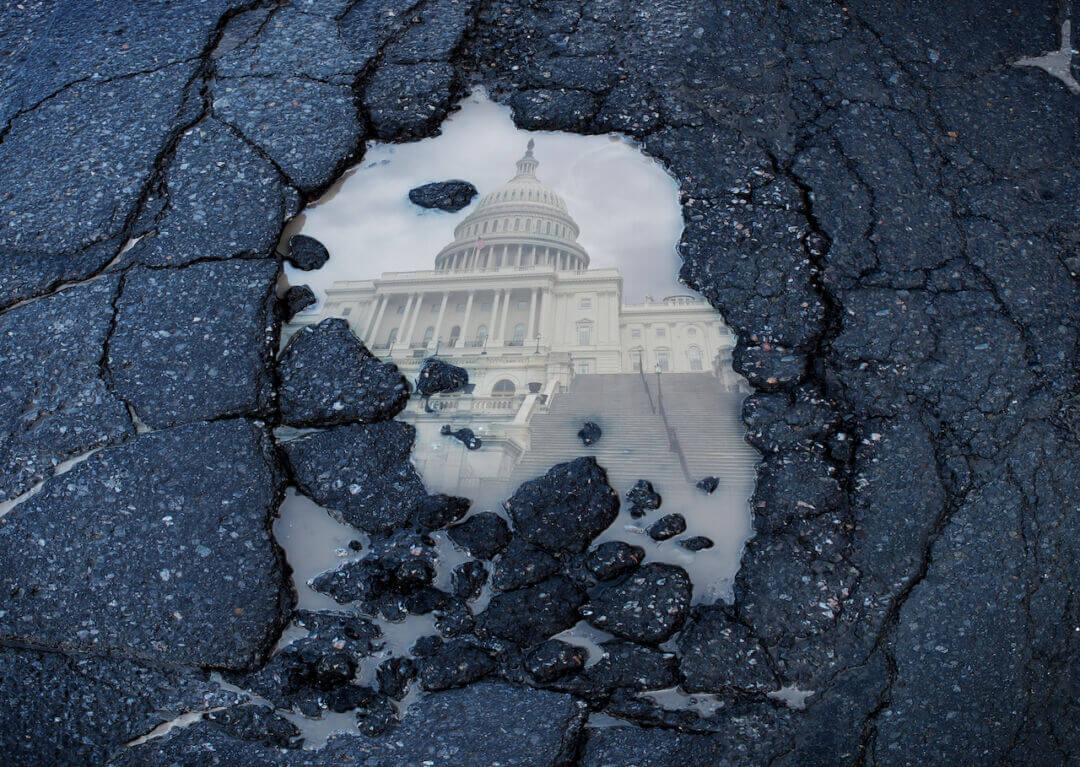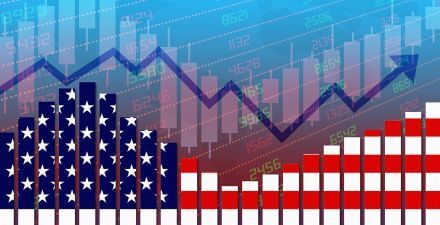The coming public debt scare should not spook U.S. policymakers from investing in physical and social infrastructure

Public debt scaremongering is back in fashion on Capitol Hill. Republican legislators, from Senate Minority Leader Mitch McConnell (R-KY) on down, are invoking the high level of federal government debt—currently approaching 103 percent of Gross Domestic Product—as reason to oppose President Joe Biden’s proposed $3.5 trillion of new social infrastructure and investments in abating the effects of climate change.
Later this month, with the temporary COVID-related suspension of the federal debt limit lifted, the debate is about to acquire another flashpoint. Republicans are likely to insist that the debt ceiling should remain where it is to prevent the further accumulation of debt. They seem ready to go down this road despite understanding that, at some point, failure to raise the debt limit would prevent the government from paying its bills, with damaging economic consequences.
This might be an acceptable price for politicians seeking to highlight their arguments that excessive debts damage the U.S. economy and burden future generations with high debt-service obligations. But these arguments are partial and incomplete.
In a new book, In Defense of Public Debt, my co-authors and I show how governments, through the ages, have resorted to issuing public debt to meet emergencies and address pressing social needs. The critics of higher public spending are right, of course, that additional debt requires higher taxes to fund interest payments, and that higher taxes are distortionary, meaning that they can be a drag on economic growth. But that doesn’t negate the need for higher public spending when conditions demand it. As my co-authors and I argue, expenditure restraints that limit the U.S. economy’s capacity to grow would be counterproductive from even the narrow standpoint of debt sustainability.
Sovereign debt had its origins in the recourse of sovereigns to debt issuance when it was necessary to raise armies and defend their kingdoms. That the U.S. ratio of debt-to-GDP reached its all-time high in World War II is a modern instance of the same phenomenon. But governments also resort to debt issuance to meet other emergencies, such as financial crises and pandemics, as we know from the experience of the past 15 years.
Sometimes there is disagreement about whether circumstances rise to the level of an emergency, as happened amid the twin housing and financial crises in 2008 and 2009, and whether the interventions made possible by debt issuance justify the costs. At other times, as in 2020, when the coronavirus pandemic threw the U.S. economy into a recession and public health emergency, the question answers itself.
Do our nation’s infrastructure problems rise to the level of a national emergency? Some answer yes, on the grounds that our physical infrastructure is old, dangerously vulnerable to climate change, and inadequately green and digital. A significant minority in the U.S. Senate insists otherwise, arguing that all additional infrastructure spending should be fully financed with new taxes and other savings. More infrastructure investment is desirable, they acknowledge, but it is insufficiently urgent to justify costly debt finance. That’s why we have these so-called pay-fors in the bipartisan Senate bill.
One way of adjudicating the dispute is to ask whether additional infrastructure investments will pay for themselves. At current interest rates, the U.S. Department of the Treasury will have to pay somewhat less than 2 percent on the roughly $250 billion the Congressional Budget Office says will be added to the national debt by the bipartisan physical infrastructure bill that passed the U.S. Senate in early August. (In other words, the CBO disputes that the pay-fors are actually all paid for.) For the investment to pay for itself, that infrastructure will have to yield an overall return of 8 percent, meaning a yield of 2 percent to the government, since federal revenues are roughly a quarter of GDP.
Given that our infrastructure is old, outmoded, and dangerously vulnerable to climate change, the returns on investment are surely a multiple of this. The nonpartisan Congressional Budget Office doesn’t disagree.
And it gets better. We really should be comparing apples with apples—real returns with real returns. Currently, the real (inflation-adjusted) interest rate on new government debt is negative: Whereas the yield on 10-year Treasury bonds is less than 2 percent, inflation is more than 3 percent. In this situation, any investment that yields a positive real return is effectively self-financing.
What about the objection that the additional public investments will crowd out productive private investments? The way private investments get crowded out is through higher interest rates that render financing them prohibitively expensive. And there is no evidence yet of higher interest rates.
Which brings us to the proposed $3.5 trillion of additional spending on social infrastructure and abating the effects of climate change that is now under debate in Congress. Although supporters of the package insist that it will be fully financed by additional taxes on corporations and the wealthy, anyone who understands how U.S. politics works can safely assume that, just like the bipartisan infrastructure bill, only some of those taxes will survive congressional negotiation, and some fraction of the spending will be debt-financed.
Should we worry? No. The $3.5 trillion package contains some of the highest return on investments on the planet—much higher even than those on physical infrastructure. Such is the evidence on investments in care infrastructure such as early childhood education, day care, pediatric care, and child nutrition, which make for more productive, not to mention healthier and happier, adults. Similarly of access to community college: A year of community college pays for itself in as little as 7 or 8 years.
The same is again true of climate change abatement, where investments today will avert the need for much more expensive investments tomorrow. And because these are investments where social returns exceed private returns—where the benefits don’t accrue exclusively to individuals undertaking them—there’s a role for government in providing the finance.
Others, among them economist Larry Summers, worry that $500 billion of new infrastructure spending (the headline figure may be $1 trillion, but only half is new spending), together with $3.5 trillion of additional social infrastructure and climate-abatement spending, will overheat an economy that is only $500 billion smaller than it would have been absent the coronavirus pandemic and resulting recession.
But this spending will be spread over 10 years, and maybe half will be financed with new taxes. So, we’re talking about $200 billion of additional deficit spending annually in an economy with $500 billion of spare capacity, assuming that the prewar growth trend is an accurate guide to the latter.
And even if the U.S. economy overheats, causing inflation to shoot up, this will actually be good for debt sustainability, not bad. Inflation will raise the denominator of the debt-to-GDP ratio. Higher nominal incomes were, of course, one of the ways our nation brought down its high debt-to-GDP ratio after World War II.
In fact, the worrisome scenario is that in which inflation remains low, not high, but in which interest rates rise. Higher real (inflation-adjusted) interest rates will make servicing the debt correspondingly more costly, requiring the application of additional distortionary taxes, thereby hampering growth. This would be an argument for going slow on even relatively high-return, debt-financed public investments.
But as noted, there is no sign of higher real interest rates yet. Indeed, real rates have been trending downward, not upward, for the better part of four decades—some would say not just for four decades, but also for four centuries. Real interest rates adjust to equalize savings and investment—not U.S. saving and investment, but global saving and investment.
Some economists point to the high savings of Germany, Saudi Arabia, and fast-growing emerging markets such as China to explain recent trends. Others suggest that real interest rates have fallen because the need for physical investment has declined with the shift from manufacturing to services and from physical platforms to digital platforms, and due also to the falling relative price of capital goods. Whatever the cause, the result has been to confront more saving supply with less investment demand and to depress the real interest rate.
Might this now change? The savings of oil-exporting economies could fall as demand for their petroleum dries up. Consumption in China could rise to levels more customary for a middle-income country as its government builds out its own social infrastructure to cope with an aging population. Such changes are coming. But history tells us that developments such as these are slow-moving. It’s implausible that they will cause real interest rates to shoot up between today and tomorrow or between this year and the next.
Ultimately, the day will come when the United States will need to take proactive steps to stabilize the debt-to-GDP ratio and prevent rising debt-service costs from launching the debt ratio on an explosive path. At this point, fiscal consolidation will require a combination of higher taxes and expenditure restraint.
As noted above, expenditure restraints that limit the U.S. economy’s capacity to grow would be counterproductive from even the narrow standpoint of debt sustainability, since these would depress the denominator of the debt-to-GDP ratio. In other words, expenditure restraint, when the time comes, should not fall on the high-return investment projects discussed above.
International experience with the structural adjustment programs of the International Monetary Fund tells us that governments, when compelled to cut spending, find it easier politically to cut public investment than public consumption. That experience, in places as diverse as Latin America and Greece, also indicates that spending cuts that disproportionately impact the poor are likely to be unsustainable politically—they provoke a political backlash that defeats the adjustment effort.
This is one reason why the IMF, having seen earlier adjustment programs fail, now talks about the importance of pro-poor adjustment and equitable, inclusive growth. Eventually, the time will come for U.S. policymakers to take this same lesson to heart.
—Barry Eichengreen is the George C. Pardee and Helen N. Pardee professor of economics and political science at the University of California, Berkeley, and the co-author, along with Asmaa El-Ganainy at the International Monetary Fund, Rui Esteves at the Graduate Institute of International and Development Studies, and Kris James Mitchener at Santa Clara University, of In Defense of Public Debt (September 2021: Oxford University Press).






